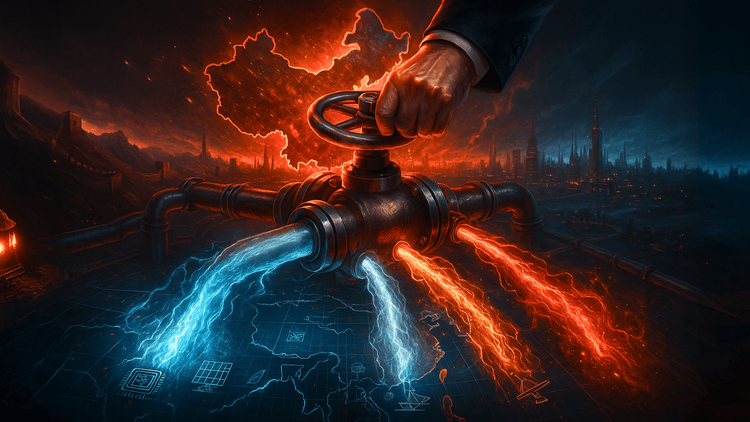Beyond the Mine: Could Antimony Becomes the Next Rockefeller Legacy?
From Prospect to Power: How Antimony’s Supply Chain Fuels the Future

In the 19th century, John D. Rockefeller didn’t just drill oil wells—he built an empire by controlling the entire journey from extraction to pipelines to refineries. Today, as the world pivots to a clean energy future, critical minerals like antimony are the new crude, and the wealth lies in mastering every link of their supply chain. Mining antimony is vital, but so is refining it, smelting it into usable forms, and scaling it into the industries of tomorrow. We’re at a Rockefeller moment, and antimony’s full ecosystem—from pit to product—is where fortunes will be forged.
Antimony’s unique properties—flame resistance, alloy hardening, and roles in batteries and semiconductors—make it a linchpin for defense, technology, and renewables. The U.S. consumes over 50 million pounds annually but produces none domestically, relying heavily on imports. China, commanding nearly 50% of global supply, rattled markets in 2024 by banning antimony exports to the U.S., pushing prices to $39,500-$55,000 per metric ton. This isn’t a crisis—it’s an opportunity. The entire antimony supply chain, from exploration, extraction to smelting to delivery, is critical, and those who control it will shape the next industrial empire.
The Whole Chain Matters
Exploration kicks off the antimony journey—finding new deposits ensures the pipeline stays full. Mining extracts the raw material, processing refines it, smelting transforms it, and logistics deliver it. China’s dominance isn’t just about its reserves—it’s about its 60% grip on refining and smelting, paired with logistical mastery. “The U.S. has already diversified its supply chains away from China where possible, buying more from Southeast Asia,” says Ellie Saklatvala, head of non-ferrous metals pricing at Argus. “However, it is unclear in the near term how they will fill the gap now left by China.” Every link—exploration, mining, processing, smelting, and logistics—is a vital gear in the machine.
Here’s why the full supply chain is the new oil:
- Exploration Edge: Mapping and proving antimony deposits in places like Europe, Canada or United States secures the future. It’s the prospecting that sets the stage.
- Mining Muscle: Extracting ore from those deposits provides the raw power. It’s the spark that ignites the system.
- Processing Power: Refineries turn ore into concentrates, prepping it for smelting. The U.S. and allies have deposits but need infrastructure to unlock them.
- Smelting Strength: Converting concentrates into high-purity metal or oxides—like antimony trioxide for flame retardants—is the refinery equivalent of the 21st century.
- Logistics Leverage: Moving antimony from prospect to market—via transport, recycling, and AI-driven allocation—sets the pace and price, echoing Rockefeller’s pipeline play.
- Waste-to-Wealth: Recycling antimony from batteries or tailings (18% of U.S. supply comes from lead-acid batteries) mirrors Rockefeller’s knack for turning byproducts into profit.
The Players Powering the Antimony Chain
A handful of companies are stepping up, not just to mine antimony, but to build the integrated systems—exploration, mining, processing, smelting, and logistics—that make it a powerhouse.
- Perpetua Resources (NASDAQ: PPTA): The Stibnite Gold Project in Idaho could meet 35% of U.S. antimony demand within six years. CEO Jon Cherry sees it as a full-spectrum win: “The Stibnite Gold Project delivers wins for communities, the environment, the economy, and our national security.” With a potential $1.8 billion U.S. Export-Import Bank loan, they’re mining and feeding into domestic smelting partnerships.
- Military Metals Corp (OTCQB: MILIF | CSE: MILI): Operating in Nevada (Last Chance Antimony-Gold Property) and Slovakia (Trojarová Project), they’re diversifying Western supply. CEO Scott Eldridge ties it to momentum: “The momentum we’ve gained in 2024, with the acquisition of high-quality antimony projects, sets the stage for a very promising 2025.” Their exploration feeds into broader supply resilience.
- United States Antimony Corporation (NYSE: UAMY): Operating the only primary antimony smelter in the U.S. (in Montana) and restarting its Madero, Mexico facility in 2025, USAC is a smelting linchpin. President of the Antimony Division John C. Gustavsen says, “We anticipate being fully prepared when our first international shipments begin arriving in early March,” targeting 100 tons per month from Australian ore. With prices exceeding $20 per pound and a $1 million upgrade underway, USAC is linking mining to market.
- Critical Mineral Resources (LON: CMRS): This London-listed firm secured an exclusive offtake deal in 2024 for Moroccan antimony ore. CEO Charlie Long links it to strategy: “We are excited to be entering the antimony market, a commodity which is so critical at this time, and which fits our strategy of diversification into trading.” They mine, trade, and upgrade ore with partners.
- American Resources (ReElement Technologies) (NASDAQ: AREC): ReElement refines antimony to 99.7% purity from stibnite. CEO Mark Jensen champions the full process: “Our innovative critical mineral refining platform is scalable, cost-competitive, and environmentally safe, enhancing the United States’ national security and economic prosperity.” They’re connecting mining to refining breakthroughs.
- Nova Minerals (NVAAF): In Alaska, Nova pairs antimony with gold exploration. CEO Christopher Gerteisen underscores the stakes: “Antimony is in a big and real shortage.” Their dual-resource approach strengthens the upstream supply chain.
The Wealth Creation Event
Today’s antimony market—volatile prices, fragmented players, and China’s dominance—mirrors oil in the 1860s. But consolidation is coming, and it’s the companies mastering the full chain that will thrive. “Secure sourcing of critical minerals is critical to the defense industrial base,” says Adam Burstein, technical director for strategic and critical materials at the U.S. Department of Defense, which has poured over $439 million into domestic antimony projects. The U.S. Department of Energy’s $45 million investment in critical minerals consortia signals the same: mining, processing, and smelting together unlock the future.
Look at today’s giants for inspiration:
- Amazon’s logistics empire shows how controlling flow creates wealth—antimony’s supply chain will do the same.
- Cloud providers like AWS profit by owning infrastructure—antimony smelters and transport networks will follow suit.
- Tesla’s integration across cars, energy, and credits mirrors how antimony players can link mining to recycling.
Antimony isn’t just a mineral—it’s a system. Mining kicks it off, processing and smelting refine it, and logistics deliver it. As China tightens its hold, the U.S., EU, and allies must build their own chains. The next Rockefeller won’t just dig—they’ll connect every link, from the earth to the economy, and the empire they create will power the future.






